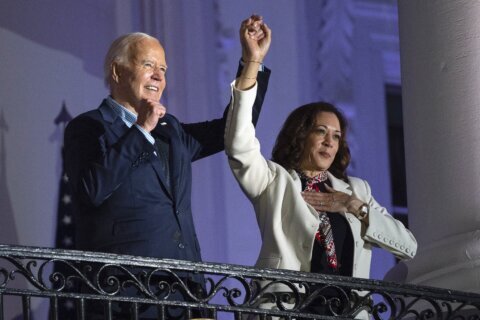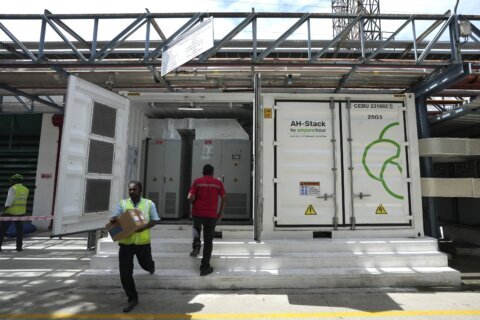Although made famous for its world-class casinos and entertainment offerings, the unlikely success story of this region in the middle of the Mojave Desert now includes a variety of major league sports teams (with perhaps more on the way), an economy that has expanded beyond hospitality and amenities that reach far beyond The Strip and continue to attract outdoor enthusiasts from throughout the country. While a multiyear drought could mean increasing challenges for obtaining fresh water for new development, so far Las Vegas has defied the skeptics with a combination of adaptability, resilience and optimism.
Once ground zero for a collapsing housing market in the wake of the financial crisis of 2007-08, in more recent years the Las Vegas housing market slowly rebounded and then spiked along with the rest of the country from mid-2020 to mid-2022 as mortgage rates reached historic lows.
Since then, while median home sale prices have fallen as mortgage rates jumped, the housing market has shown recent signs of leveling out, potentially giving buyers a final chance to jump in while they still have the power to ask for price cuts and other sales incentives. Using information from the U.S. News Housing Market Index, we’ve compiled the data you need for a better understanding of the Las Vegas metro real estate market in 2023.
[The Hottest Housing Markets in the U.S.]
How the Las Vegas Housing Market Changed in 2022
The number of total building permits authorized in Las Vegas jumped to 2,125 to start out 2022 in January, the highest monthly level since mid-2008. While the level of permits stayed relatively high through April, as spring turned to summer and then fall, it steadily declined for the remainder of the year, falling 64% year-over-year through January 2023 to 766 units.
For single-family detached homes, the rise in building permits peaked several months earlier than for multifamily units, rising to 1,240 units in February before trending down to 369 units by December. While they did rebound to exceed 450 in January, year-over-year they’re still down by 61% for the three-month period ending in January 2023.
[IMAGE]
With households increasingly priced out of single-family detached homes for sale in 2021, they continued to turn to the condominium and apartment markets for new housing, with developers pulling 1,038 permits in January 2022, the highest monthly total since February 2016. Since then, as the demand for apartments began to wane the overall trend for permits also declined. During the three-month period ending in January 2023, 52.7% percent fewer multifamily permits were requested versus the same months ending in January 2022.
[IMAGE]
[READ: What Is a Housing Market Price Correction?]
Las Vegas Housing Supply and Demand
The supply of housing in Las Vegas, which had dipped as low as 1.08 months in March 2022 as buyers raced to take advantage of low mortgage rates, rose sharply in the following months as lending rates continued to increase. Reaching a peak of just over five months by October, by January 2023 the months of supply slowly trended down to 4.6 months. In general, because a balanced market includes from four to six months of supply depending on demand, Las Vegas could be described as a slight buyer’s market. For just the month of January 2023 year-over-year, the supply of homes for sale rose by 3.25 months, or an increase of over 240%.
[IMAGE]
According to Rob Jensen, owner and broker of the Rob Jensen Company, which specializes in luxury homes in gate-guarded communities, those looking to buy a home should first arm themselves with data on what’s available given limited inventory. “Once you start plugging in your criteria, there are not a lot of options,” he says. “Unless you have context, it’s hard for buyers to make a decision.” Jensen also noticed that the luxury home market has come under added pressure due to losses in the stock market and other investments, offering up an apt analogy for those hitting it big at a local casino: “People buy jewelry when they win, not when they lose.”
For sellers, standing out in today’s market means ensuring that homes built just 10 or 20 years ago are renovated and look or smell new. As Jensen advises, “Condition influences price, and people like to buy new cars, clothes and also homes,” especially in a market where styles have continued to change.
In the rental market, the addition of new apartments and single-family homes for rent meant an increase in Las Vegas’ vacancy rate of 6.1% as reported by the Census Bureau for December 2022. Edging up 0.2% year-over-year and higher than the national average of 5.8%, because it’s just over 1 percentage point higher than the 5% level generally considered to represent rental market equilibrium between supply and demand, tenants should be able expect some negotiation room with landlords in the months ahead. Still, although Las Vegas’ rental vacancy rate did edge up 0.2 percentage points year-over-year, it’s down from the 6.3 months reported for January 2022 and significantly less than the last peak of 9.6 months reported for January 2018.
[IMAGE]
[Is the Rental Market Finally Softening?]
Sales activity in the months ahead may also be impacted by rebounding mortgage rates resulting from inflation, which is trending down but still too high for the Federal Reserve. According to the seasonally adjusted Purchase Index from the Mortgage Bankers Association for the week ending March 10, although purchase applications did rise for the second consecutive week, they were still down 40% year-on-year as rising mortgage rates continue to keep many buyers on the sidelines.
For Austin Martell, an agent with eXp Realty and rock climber who was first drawn to the Las Vegas Valley to take advantage of nearby mountains, he sees the current market as an opportunity for buyers to “gain some wiggle room in terms of price drops and negotiations” such as sellers buying down mortgage rates. Martell adds that many of his outdoor enthusiast clients are increasingly drawn to areas such as Centennial as well as longtime favorite Summerlin and the relatively safe Henderson.
Although the current market may be soft, Martell remains bullish on the future of Las Vegas, which continues to expand far beyond its hospitality-related origins, especially for sports fans. Besides nabbing the Raiders football team and the new Golden Knights hockey franchise, future major league baseball and basketball teams may also soon call Las Vegas home, especially with a sixth arena for 20,000 fans planned to start construction later in 2023.
Still, if there is one overriding issue which could impact the growth of Las Vegas in the years ahead, it’s the availability of fresh water. Although most Las Vegas residents already treat water like the scarce resource it has become in the western U.S., state lawmakers are mulling giving the local water authority the power to shut off water service to single-family homes using more than 163,000 gallons each year. Since the average household uses just 136,000 gallons, the law would impact the most serious scofflaws. Still, with the region depending on the dwindling Colorado River for 90% of its water supply, local leaders will likely need to come up with even more ingenious ways to recycle existing supplies to meet future demand.
Consumer sentiment as measured by the University of Michigan’s Survey of Consumers rose to 64.9 on a 100-point scale in January but was still down 2.3 points year-over-year. Notably, while the sub-index measuring Current Economic Conditions for January was higher at 68.4, the Index of Consumer Expectations was lower at 62.7.
[IMAGE]
Foreclosure Trends
With relatively low unemployment and most existing homeowners benefiting from low mortgage rates offered in 2021 and part of 2022, both foreclosures and delinquencies tracked by Black Knight remain at very low levels in the state of Nevada. As of December 2022, just 0.30% of homes in the state were in foreclosure versus 0.37% for the nation. Statewide delinquencies fell 0.4% to 2.9% in December, versus 3.1% for the nation.
Still, there is a new wrinkle with the latest housing boom in places such as Las Vegas, which may not be trackable by mortgage servicers reporting to Black Knight: all-cash sales. According to Redfin, the share of all-cash sales soared above 30% in 2021 and continued throughout 2022. If these homes were bought as investments using non-mortgage debt and rents decline, this level of hidden distressed homes could hit the existing home market with further price declines in order to make a sale.
Median Home Price in Las Vegas
For buyers, a longer timeline of homes for sale has helped to lower prices, with the median sales price falling 2.7% year-over-year in January to $394,000. While this median price is still nearly 2.9% higher than the national median of $383,000 and has fallen 12.4% from its peak of over $550,000 last June, if prices continue to moderate, that could boost sales in the upcoming spring and summer selling seasons.
[IMAGE]
For newly built homes, potential buyers could snag a better deal than they might with existing resale units, especially for standing inventory. According to Andrew Smith, president of Las Vegas-based Home Builders Research, while uncertainty remains high in the region, local builders are also optimistic in light of continued strong population growth, low existing home inventory and buyers accepting the “new normal” including higher mortgage rates.
Although most new homes here tend to be single-family detached units on their own lots, a combination of land constraints and future zoning changes could mean more higher-density housing in the future. For now, however, Smith says that the more affordable new homes for sale are “mostly townhomes and suburban vertical duplexes, but no flats for sale.”
Although home prices did continue to rise quickly in 2022, they peaked a month earlier in the year than median rental rates did from Zillow’s Observed Rent Index, which continued to rise through July to $1,903 per month. Since then, area rents have continued to slide, falling to $1,789 by January and down 1.2% year-over-year. In addition, with more multifamily supply on the way — including 285,000 units under construction in just the West Census region alone in January — it’s possible that rents will continue to decline depending on how many of these units are located in the Las Vegas area.
[IMAGE]
With the Census Bureau’s American Community Survey reporting 854,289 households as of December 2021, Nevada’s largest metro area has continued to grow briskly, capturing many households fleeing higher-priced markets in California. In the two years prior to the end of 2021 the region grew by nearly 41,000 new households, or over 20,500 per year.
Nationally, while costs for new single-family homes as reported by the Census Bureau’s Construction Cost Index for January have retreated from their November peak of 195.5, they’re still up 12% year-over-year to 190.6.
Similarly, while average mortgage rates tracked by FreddieMac’s Primary Mortgage Market Survey did retreat from their peak of 6.90% in October to 6.27% in January, as of March 16, 2023, the rate for a 30-year fixed rate loan rebounded to 6.60%.
Unemployment Trends in Las Vegas
Even if its housing market has softened, Las Vegas continues to enjoy a relatively strong job market with non-farm employment in December 2022 up over 43,000 year-over-year to 1.08 million jobs. Still, although the local unemployment rate did edge down 0.4% year-over-year to 5.4%, it’s still markedly higher than the U.S. average of 3.5%.
[IMAGE]
[IMAGE]
Notably, growth in positions related to construction and manufacturing are growing faster than the longtime mainstays of hospitality and trade, transportation and utilities. Of this 43,300 annual rise in the total number of jobs, 10,900 (25%), were in the construction industry, increasing by 16.3% to 78,000 and accounting for a 7.2% share of all jobs in the market area.
Builder Confidence in Las Vegas Recently Improves
Builder confidence on a scale of 0-100 for the West Census Region from the NAHB/Wells Fargo Housing Market Index fell 54 points year-over-year to 37 in February, but is still up from 39 in January, higher than the national level of 42 and the strongest showing since December.
[IMAGE]
For nonresidential construction activity, the Architecture Billings Index provides another economic indicator with a lead time of approximately nine to 12 months, with 50 marking the split between increases or decreases in billings. In January, the index for the West Census region rose 3.7 points year-over-year to 51.3 while the national index fell 1.7 points to 49.
[IMAGE]
Las Vegas Real Estate Market Predictions
With the spring selling season underway and the decline in median sales prices slowing, while buyers may not be able to count on sharp price reductions, they could still take advantage of the current buyer’s market by taking advantage of seller concessions and submitting offers below the list price. Still, due to the region’s strong population and employment growth, a favorable business climate that’s extending beyond hospitality and continued interest from investors, the region’s housing market could recover faster than other housing markets with weaker economic fundamentals.
The U.S. News Housing Market Index is forecasting over 2,600 single-home permits from February through June in addition to nearly 1,700 permits approved for multifamily homes for the Las Vegas MSA. Although permits for single-family homes did fall more than predicted in the last half of 2022, that could change if Las Vegas population growth remains strong and mortgage rates again retreat closer to 6% or below.
More from U.S. News
The Most Undervalued Housing Markets in the U.S.
Bay Area Housing Market Forecast
Las Vegas Housing Market Forecast originally appeared on usnews.com







